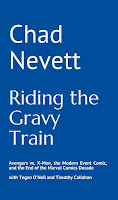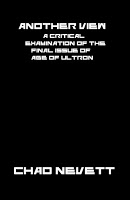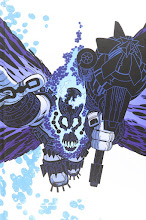[The second in my series of posts looking at Joe Casey's run on Cable. Since Casey took over the title midstoryline, I've begun by looking at the three issues James Robinson wrote before Casey came aboard. New posts Tuesday, Thursday and Saturday.]
So I'm sitting here, writing this post and I look over at the cover of this issue and notice artist signature. There's the combined one by Ladronn and Juan Vlasco, but then there's also the "LIQUID!" (or is it "LICQUID!"?) bit added by the colouring studio. They used to do that on every fucking cover they coloured and it was such a marker of that late '90s Marvel era. Whatever happened to those guys?
"The Hellfire Hunt" continues with Irene Merryweather learning a little bit about Cable--actually all she learns is that he's a mutant from the future. Ah, that mysterious Cable! We learn that Pierce is the one behind the "Tomorrow Agenda" and it relates to him wanting to take revenge on Cable for something or other. Cable tricks Pierce into thinking he's in Algeria, so he can raid Pierce's house with as little resistence as possible. No such luck as Cable winds up having to blow shit up, fuck people up and almost dies while inside the head of one of Pierce's flunkies. In the end, he knows what they're trying to do: kill Apocalypse and harness his power for their own purposes, and have been trying to kill Cable because they figure he'd try to stop them. And they figured right.
A decent enough issue that advances the story a little with the introduction of the main characters (Cable and Pierce) and makes the actual problem clear. Really, this is the first act of the story, issue 48 more a prologue. It has Cable in his element: fighting a shadowy conspiracy featuring many faceless flunkies and relating to Apocalypse.
This issue also hints at a few elements of Cable's mythology that will get played up. First, Irene as his chronicler, suggesting his messiah-like role. Second, a group called "the Believers" who work with Cable to further his goals, again pushing his messiah role. Casey will use these elements further, but Robinson lays the groundwork here.
Ladronn's art continues to amaze as he manages to fill most pages with five or more panels without it ever looking cluttered or confusing.
Robinson's main problem here is that he doesn't seem to know what sort of story he is telling. He uses three different types of narration, tries to get into the heads of three different characters, but, as a result, winds up giving us very little information. He introduced Irene as a POV character, but doesn't use her as such here--or, at least, not enough. The entire sequence with Pierce and the third-person omniscient narrator distracts from the story and Irene's narration.
On Tuesday, I'll look at issue 50, which is also Robinson's last issue on the book. And, then, on Thursday, we get Joe Casey's first comic work for Marvel (maybe his first comic work period, but I remember hearing about a book he did for Calibre that could have been around before this).
Fall of the House of X #4 annotations
12 hours ago






